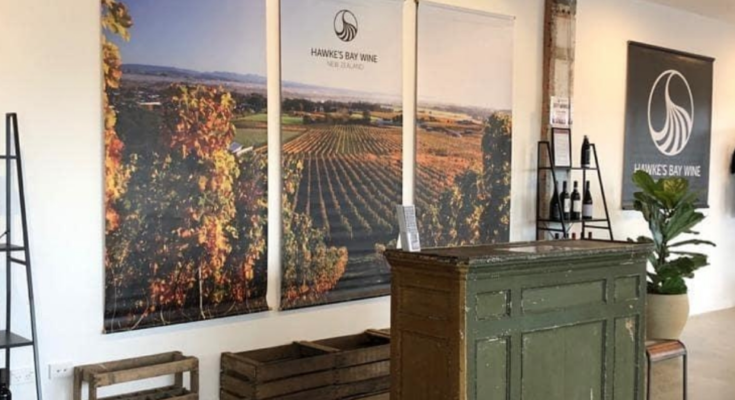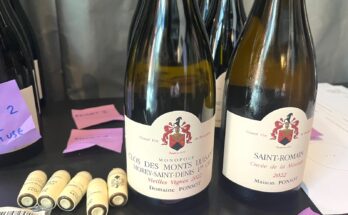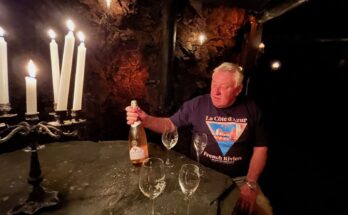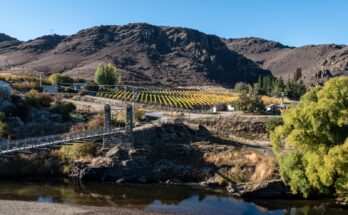Winemaker Hugh Crichton (one of the nominees for ‘Gourmet Traveller New Zealand winemaker of the year 2020’) was the winemaker who, along with Maxime Cavey from Hawke’s Bay Winegrowers, took me through a presentation of wines from across the region when i visited in December 2020.
The location was the rather fabulous ‘Urban Cellar Door’, that Hawke’s Bay Wine have set up on the corner of Warren and Heretaunga Streets in Hastings. Along with rotating feature wineries or groups presenting special themed tastings, a number of the wines on show, which are not usually available via cellar doors, will be available to taste or to purchase by the bottle.
Hugh introduces the tasting by telling me “One of the key aspects of Hawke’s Bay wine is what the climate delivers for the wine styles. You can see it particularly in the Chardonnay, where we have that lovely combination of richness and definition. We get that rich concentration in the fruit, but because it’s not too hot, by the time the fruit gets to the critical ripening stage, you start to get cooler nights that slows the development and retains acidity, which is critical for the wine style. We don’t have to interfere too much in the vineyard and that shows that the variety has found it’s natural place.”
The region has a maritime climate, which is particularly evident towards the coast. Out at Te Awanga with the cooling sea breezes, they keep acidity with the lower temperatures. Gimblett Gravels can be several degrees warmer. A weather graph shows records similar to Dijon, and although the wine styles can be similar – determined primarily by climate, with different soils types and practices in winemaking, viticulture will have an influence as well, of course. It shows that in Old World against New World terms, the climates can be similar, so if someone was wondering about New Zealand and wine – you can see on the graph how that comes about. And these days it doesn’t mean that much – you can have ‘New World’ producers making wine in a more ‘Old World’ style than many of the producers there. If you look at how in Italy the younger generations have come through and inherited those old vineyards and labels, and done really modern things there.
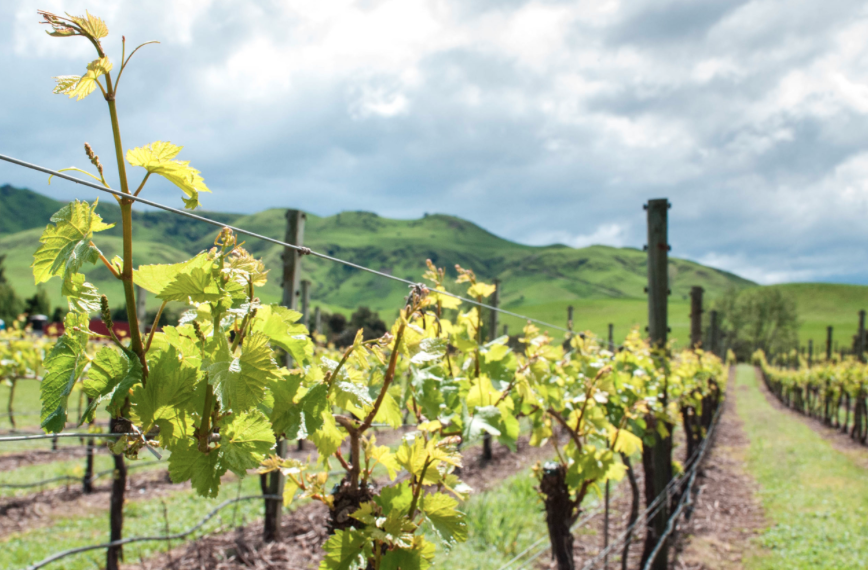
Hugh adds “I did a vintage in Bordeaux in ’97 and I was flabbergasted by the technology used over there. I went round some pretty high-end Bordeaux producers, and it is amazing what is behind those beautiful Chateaux”.
Within what we know of as ‘Hawke’s Bay’ are lots of sub regions – these in turn lead to variations in style across the region, and better ability to make great wine across a number of varieties. In the last vintage there were actually 39 varietals made in Hawke’s Bay – not the five or six that most consumers would think! It does lead to a challenge to focus either people’s minds, or the ‘message’ from the region. If it’s said that ‘Hawke’s Bay does everything’, then where is the key message in that? In a consumer’s mind – ‘everything’ can equal ‘average’. There’s one G.I. in Hawke’s Bay, and then we have Central Hawke’s Bay – obviously there is room to develop more. Gimblett Gravels falls outside of the G.I. because it’s a trademark, and G.I.s are largely determined by political and social boundaries more so than soil type. Because New Zealand doesn’t have too many rules and regulations set out hundreds of years ago, it can adapt quite quickly and be quite innovative.
60% of the wines are coming from that central part – the Bridge Pa and Gimblett Gravels, and there are an increasing amount of people producing Sauvignon Blanc and Pinot Noir from the right regions in Hawke’s Bay, even though those are not varietals that springs to mind when thinking of Hawke’s Bay. The majority of Hawke’s Bay Chardonnay goes into still wine, as opposed to other parts of the country – Marlborough has about the same hectares planted in Chardonnay for example – where it’s more of a sparkling base. Chardonnay is one of the big opportunities – where the region could be seen as one of the great Chardonnay producers of the world.
For the country’s red wines, other than Pinot Noir (and don’t forget, Hawke’s Bay makes some really good Pinot), Hawke’s Bay is it – around 95% of the countries production. The Chardonnay selection box looks into the sub-regional variations with the breadth of winemaking styles evident from the 2019 ‘vintage of a lifetime’. Hugh adds: “The challenge for Chardonnay in 2019 was the picking decision. In a warm year you’ve got the ability to pick late – because you can. It’s often tempting to say ‘it just needs a few more days’ as look for richness, but then you can lose acidity. The 2012 Legacy Chardonnay was a good example. I probably wouldn’t have picked it, but it was very wet here – and it’s turned out to be one of the greatest Chardonnays we ever released”.
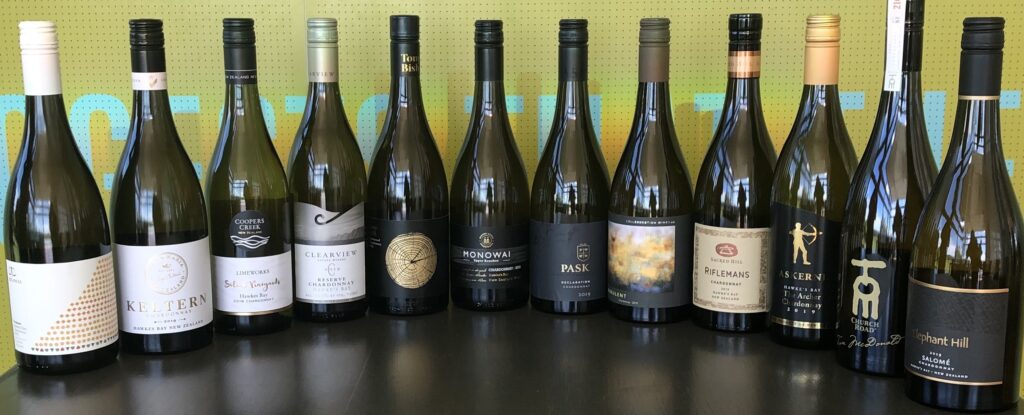
The chardonnays are diverse in terms of where they are grown, but they’re all heavy-hitters, in that it’s taken longer for them to evolve.
The Church Road Grand Reserve was one that I felt for a few years – say the ’14, ’15 and ’16s were a little out of balance, but the last couple of vintages I thought that it had been dialled back more ‘into balance’. Stylistically they are making quite complex wines that are quite clean. I remember people tasting the 2018 and commenting that they couldn’t believe it was a Church Road Grand Reserve as it was quite a departure from the usual style. They are released relatively young for a big wine.
Hugh comments: “Vidal were one of the early adopters of complexity in chardonnay as part of the ‘Vidal wine style’. It definitely integrates over time. The 2010 Legacy was very reductive and now drinking that you don’t really see it. You can choose to keep it in – the Vidal approach was hand-picked fruit, pressed straight to barrel and naturally fermented – that’s it. If that produces a more complex wine then that’s a reflection of your vineyard. In fact, if anything, it’s more hands-off with winemaking. You can reduction out by adding stuff, but my view was that I wanted to make this as naturally as possible. I was doing that from Day 1 at Vidal but it became a little bit fashionable. There’s no right or wrong, If consumers like your style then you’re keeping your market happy. That’s my philosophy – rather than chasing styles. As long as reduction is just a component – you still need quality fruit, concentration, acidity and freshness and all those other components.”
There was nothing wrong with the Vidal Chardonnays across the range – those lovely Reserve wines for example. But as you climb the ladder to Legacy you expect to find wines with more to them. And sometimes it can be that those wines are harder to love, as they’re not simple, easy drinking wines that ask nothing of the consumer. It’s a ‘discovery’ wine – there are things in there to find – a ’make you think wine’. With Chardonnay there’s the opportunity to go down lost of different paths, but the essential core will still be freshness and acidity and different fruit spectrums depending on where it’s from. But balance, fruit purity and concentration are the hallmarks of Hawke’s Bay chardonnay.
Te Awanga fruit is often characterised by the effects of cooling sea breezes – it can be a few degrees cooler at the coast. This keeps the acidity really fresh, but can also give an impression of salinity in the wines – probably your mind playing tricks with you as you know it’s a coastal sub-region. Clearview, for example, have their soils tested and they aren’t saline soils, so the perception / taste of saltiness or minerality is not coming from the terroir.
Great wines of the world age well and New Zealand Chardonnay has proven that it can age beautifully. These are the Chardonnays we tasted – all 2017 vintages:
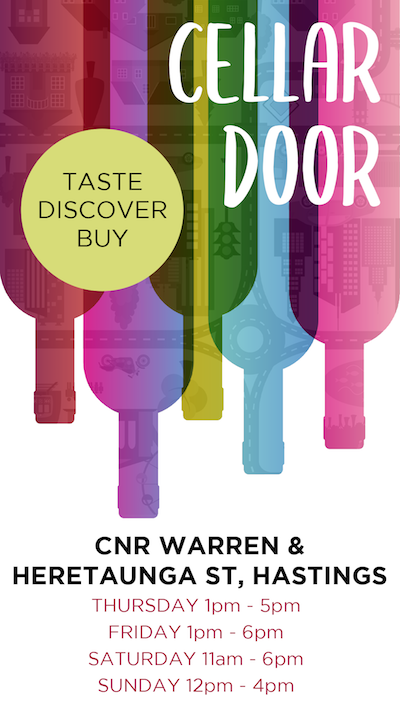
Smith & Sheth CRU Heretaunga Chardonnay Intense, concentrated and upfront. Lemon, spice and almond on the nose. Great acidity with line and depth. Drying to the finish, like a grapefruit pithiness.
Te Awanga Estate The Loom Chardonnay Taut and firm, with good acid spine. Floral and ginger spiced aromas. Well balanced with peach and citrus and a touch of salinity in the finish.
Clearview Estate Beachhead Chardonnay Flinty notes of reduction with roast cashew and lemon sherbet. Nectarine, melon and generous seasoning of oak. Robust but complex wine. Mineral and a long, sweetening finish.
Church Road Grand Reserve Chardonnay Good dose of reduction upfront, but then well integrated and structured wine. Ripe and tropical – fig, melon, pineapple, marmalade. Biscuit and oatmeal – some new oak influence but lots of texture. Well crafted and built to last.
Next up was Syrah – there’s some real diversity across the region. You can see the pepper compound coming through, some more than others – keeping that in check is key to a good balance in Syrah. Beautiful fragrance – Trinity Hill is known for this – really lifted, and lightness of colour. Winemakers are realising it’s not always about colour. You can make great wines that have a lighter colour and Pinot Noir is an obvious one for that. Not too extractive and trying to concentrate things – keeping it more agile, perfumed, elegant, less alcohol and less oak. Hawke’s Bay can make wines down that path rather than the richer, more brooding style, and there is perhaps a shift in direction.
Trinity Hill Gimblett Gravels Syrah 2016 Huge nose of bramble, spice and lilac blossom. Lighter colour but beautifully balanced and good concentration on palate. Red fruits and elderberry. Lightly peppery and with a mineral earthiness.
Elephant Hill Syrah 2015 Ripe, with a roast almond, cranberry and plum aroma, lifted by pretty florals. Supple tannins. White pepper and anise to the back of the palate. Long, balanced finish.
Pask Declaration Syrah 2014 Broad nose of dark fruits – damson and cherry. Bold with a deep complexity of flavours – darker with tar and espresso. Chewy tannins, with a black tea grip to them.
Esk Valley Winemakers Reserve Gimblett Gravels Syrah 2014 Darker and brooding. Blackcurrant, blueberry with a gamey smoke to it. Phenolic – silken but with backbone, power and drive.
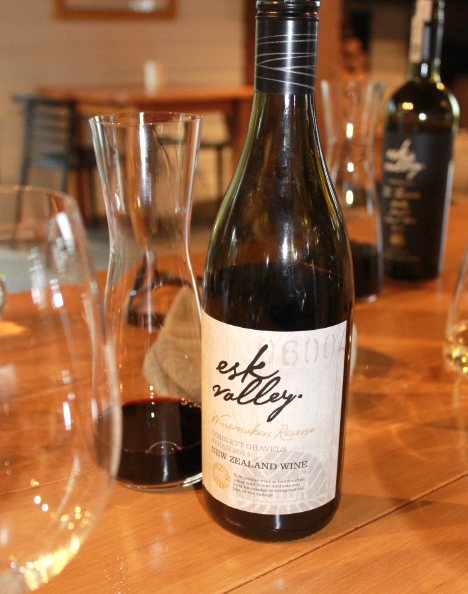
Finally we moved on to what has been the Hawke’s Bay trademark for years – big powerful reds: The cabernet – power, intensity, smoky, meaty, espresso, balsam, beautiful fruit purity – blackcurrant and aromatically perfumed. Well balanced tannins as well. Sacred Hill was velvety and textured with nice weight, sweet and sour, harmonious. Umami, bright, intense. Irongate is from a similar region and same year but quite different – in winemaking styles what they do with it. It’s floral but also moss and bark. Merlot has serious structure if a little closed but needs time.
Villa Maria Reserve Hawke’s Bay Merlot 2016 Herbal, earthy, bramble aromas. With tight tannins, depth, integrated acidity and soft texture. Red-fruit crumble, vanilla, pastry flavours. Spicy, cedar oak.
Babich Irongate Cabernet Sauvignon Merlot Cabernet Franc 2015 Mossy, plum, mint and herbs on the nose. Grippy tannins, tart acidity but with a complex, layered palate. Chocolate, mushroom, bark. Lighter, sweet, long finish
Sacred Hill Special Selection Brokenstone 2015 Bright with floral nose. Herbal, with ripe black and red fruits. Intense but harmonious. Tannins integrating nicely, acidity and a silky texture all in balance. Sweet & sour umami-like note to the finish.
Vidal Legacy Cabernet Sauvignon 2014 Aromatic – smoky, balsamic, cassis & mint notes on the nose. Power and intensity. Black fruited with bitter-sweet, mocha and chorizo underlying flavours. Good balance – supple tannins. Spicy, dry and long finish.

